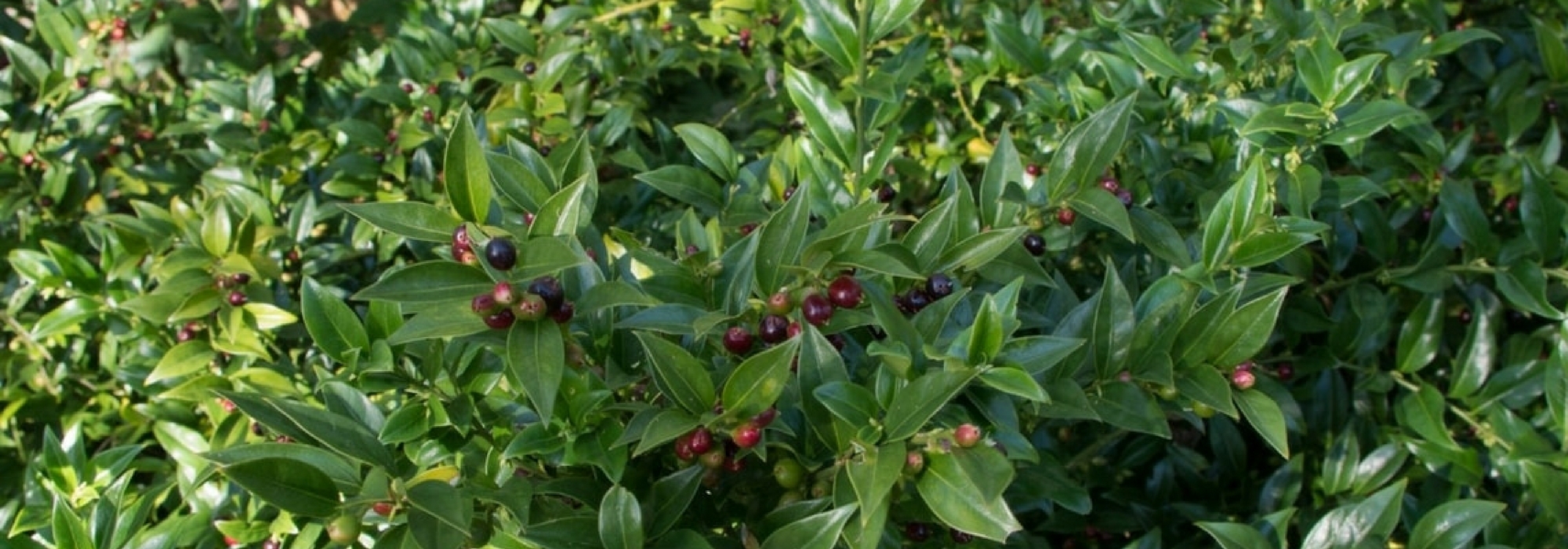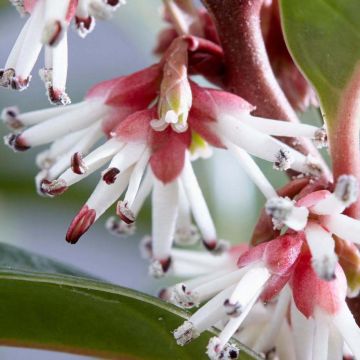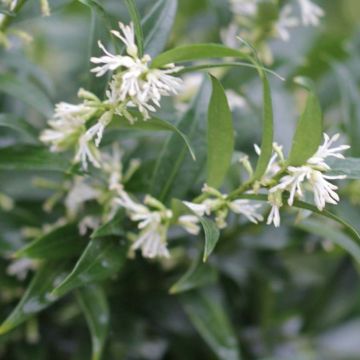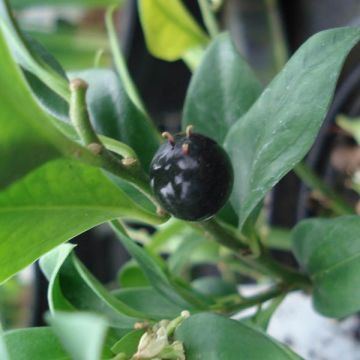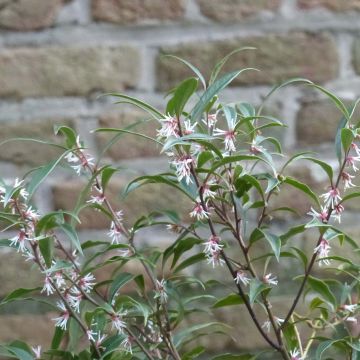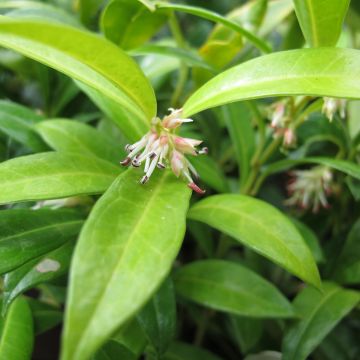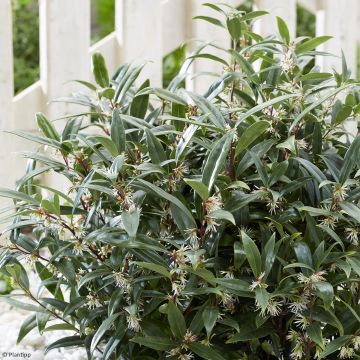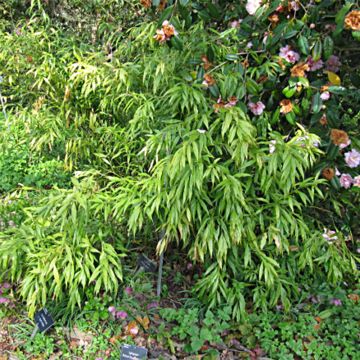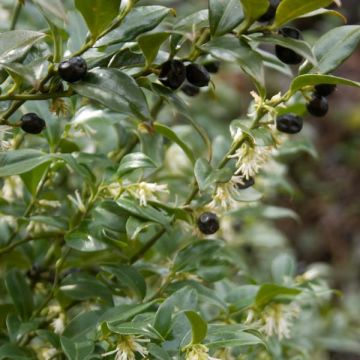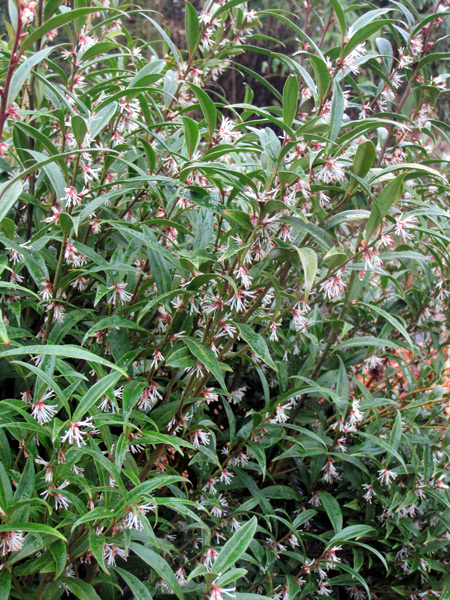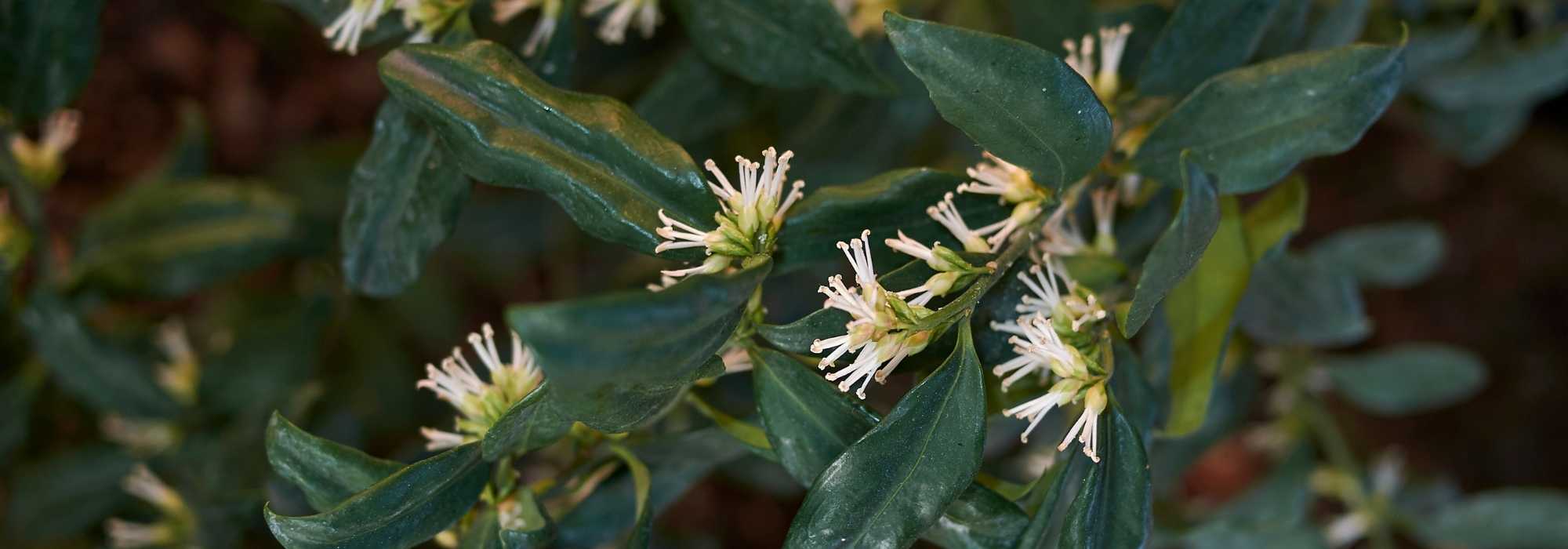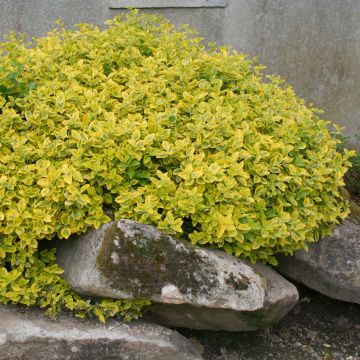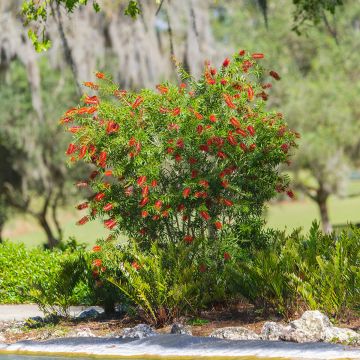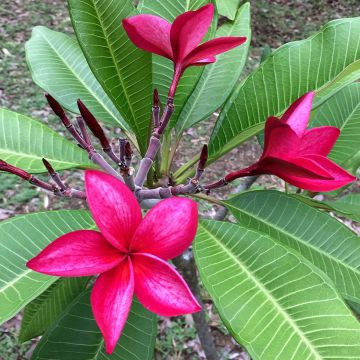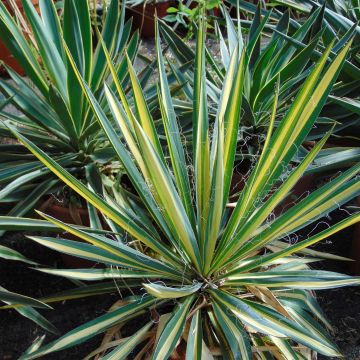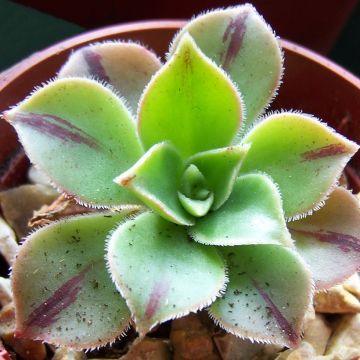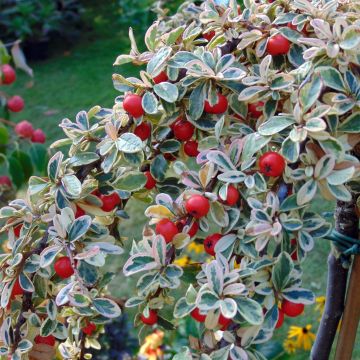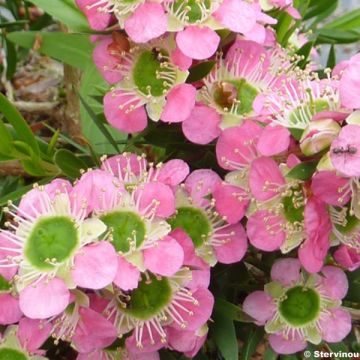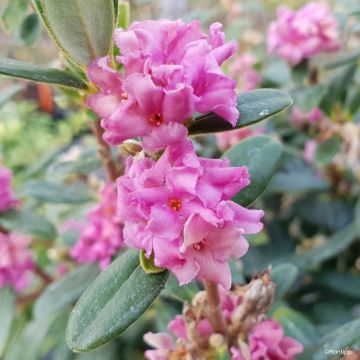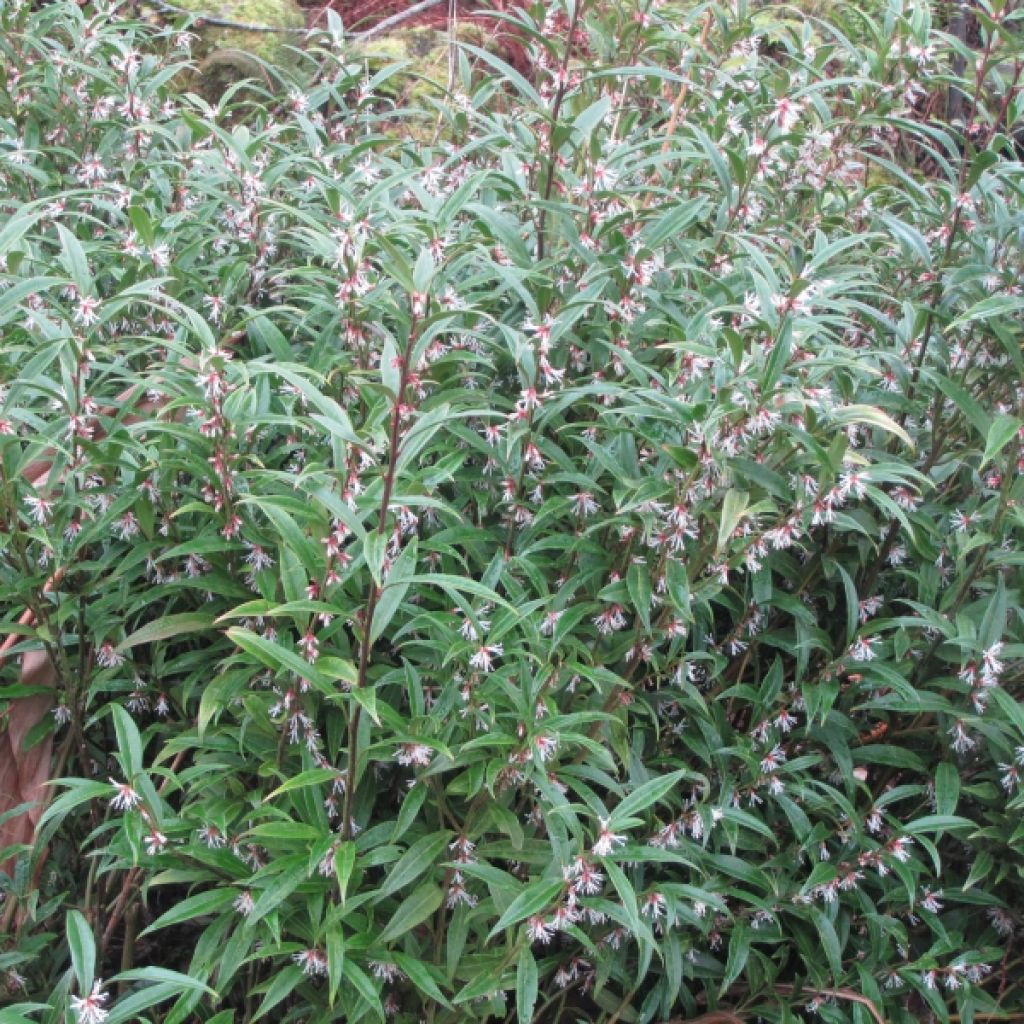

Sarcococca hookeriana Digyna
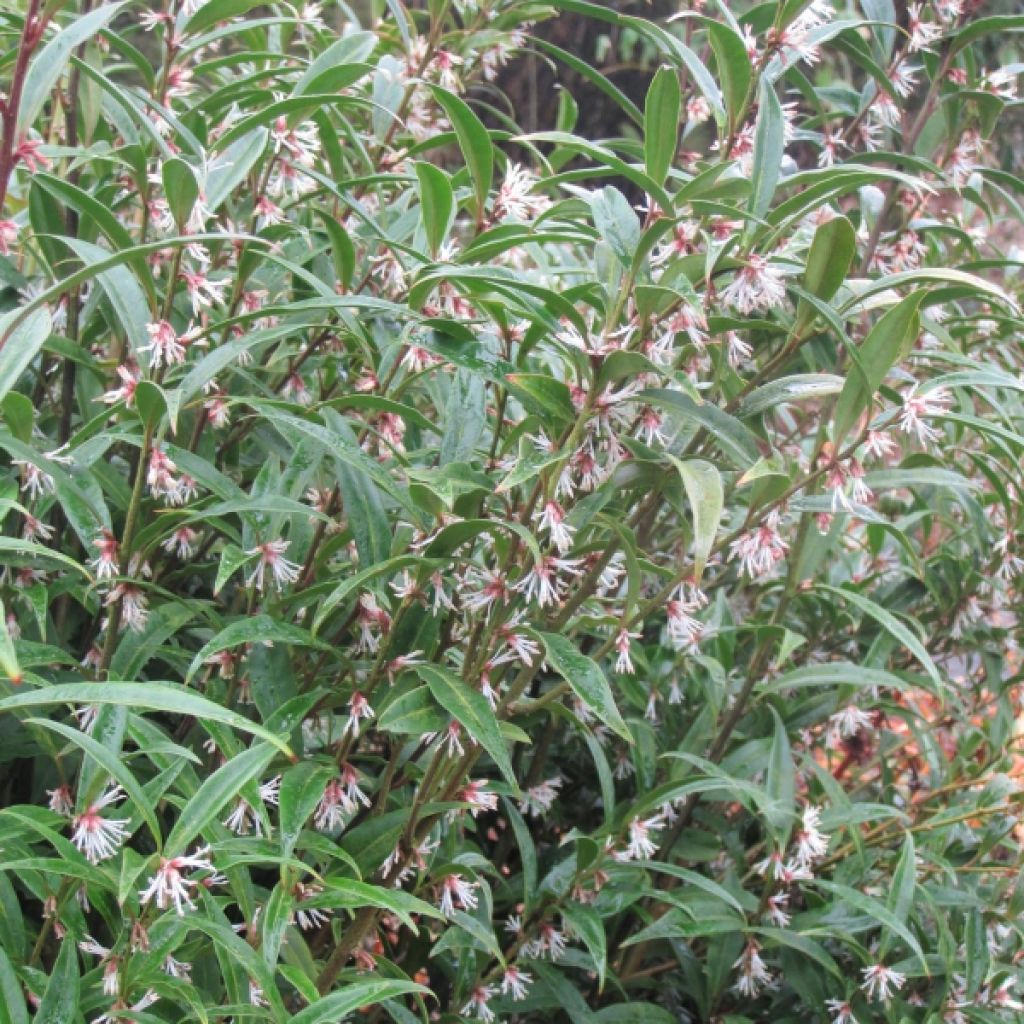

Sarcococca hookeriana Digyna
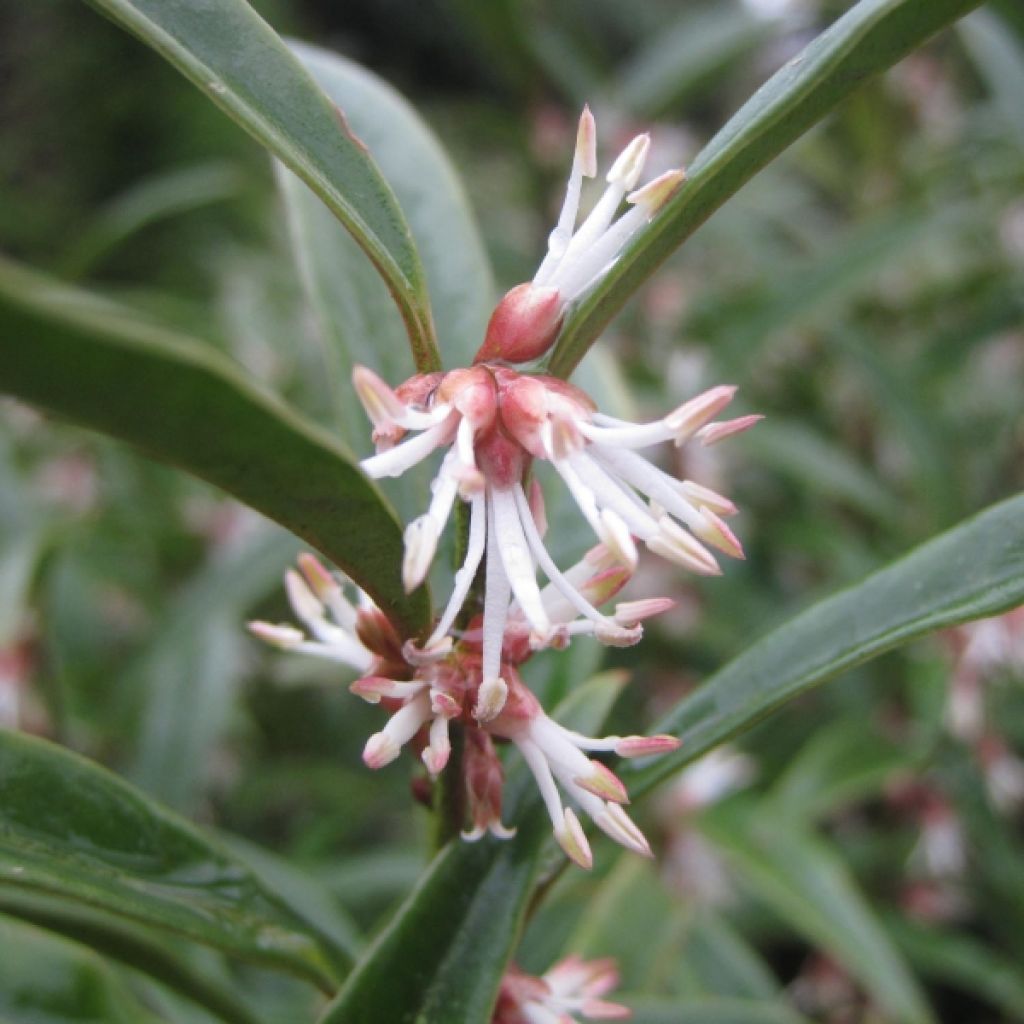

Sarcococca hookeriana Digyna
Sarcococca hookeriana var. digyna
Sarcococca hookeriana var. digyna
Sweet Box, Christmas Box
To be seen later but for the moment, I don't have the impression that it likes its planting medium. We'll see... To be continued!
wilfried lenglen, 05/01/2025
Special offer!
Receive a €20 voucher for any order over €90 (excluding delivery costs, credit notes, and plastic-free options)!
1- Add your favorite plants to your cart.
2- Once you have reached €90, confirm your order (you can even choose the delivery date!).
3- As soon as your order is shipped, you will receive an email containing your voucher code, valid for 3 months (90 days).
Your voucher is unique and can only be used once, for any order with a minimum value of €20, excluding delivery costs.
Can be combined with other current offers, non-divisible and non-refundable.
Home or relay delivery (depending on size and destination)
Schedule delivery date,
and select date in basket
This plant carries a 24 months recovery warranty
More information
We guarantee the quality of our plants for a full growing cycle, and will replace at our expense any plant that fails to recover under normal climatic and planting conditions.
Would this plant suit my garden?
Set up your Plantfit profile →
Description
Sarcococca hookeriana var. digyna is a small bush ideal for bringing life to the garden in winter, even in shady areas. It will please with its elegant evergreen foliage and pleasantly fragrant white-pink flowers. In addition to its ornamental qualities, this plant is also hardy, tolerant of different soils, and drought-tolerant. It will adapt well in many gardens.
Sarcococca hookeriana var. digyna is a slightly suckering rhizomatous bush. Belonging to the buxaceae family, it is a close relative of the Boxwood, originating from western China and the Himalayas. It is commonly found in the evergreen forests of these regions. This sarcococca forms a dense and bushy small bush that will not exceed 1.20 m (4ft) in height and 1 m (3ft) in width after many years, as its growth is quite slow. Its foliage is tough and evergreen in winter. The leaves are entire, oblong-lanceolate, and elongated, measuring 3 to 6 cm (1 to 2in) in length. The flowers, surrounded by pink bracts, appear as early as December, sometimes alongside the black fruits, creating a beautiful contrast. They are gathered in small clusters in the axil of the leaves, along the branches. They measure no more than 3 to 5 mm (1in) in length and are petal-less, showing only well-developed yellow-green stamens and 2 styles marked with pink-red at their base. This beautifully scented flowering lasts for about 2 months, depending on the climate. The round berries are 3 to 5 mm (1in) in diameter, turn bluish-black when ripe and are not edible, but very decorative.
This sarcococca offers a deliciously scented flowering at a time of year when this is quite rare. It grows slowly and, just like dwarf conifers, blends into the background during the summer, but effectively structures small spaces in winter and is undemanding. It brings a permanent presence and a touch of spring to shaded areas of the garden throughout the winter, similar to mahonias and hellebores that can accompany it. It can be cultivated both in flowerbeds and in understory, low hedges, or ground covers. It is perfectly capable of competing with tree roots. It is perfect in the company of Pieris, aucubas, or Japanese azaleas. You can even grow it in pots near your front door to fully enjoy its delicious fragrance.
Sarcococca hookeriana var. digyna in pictures


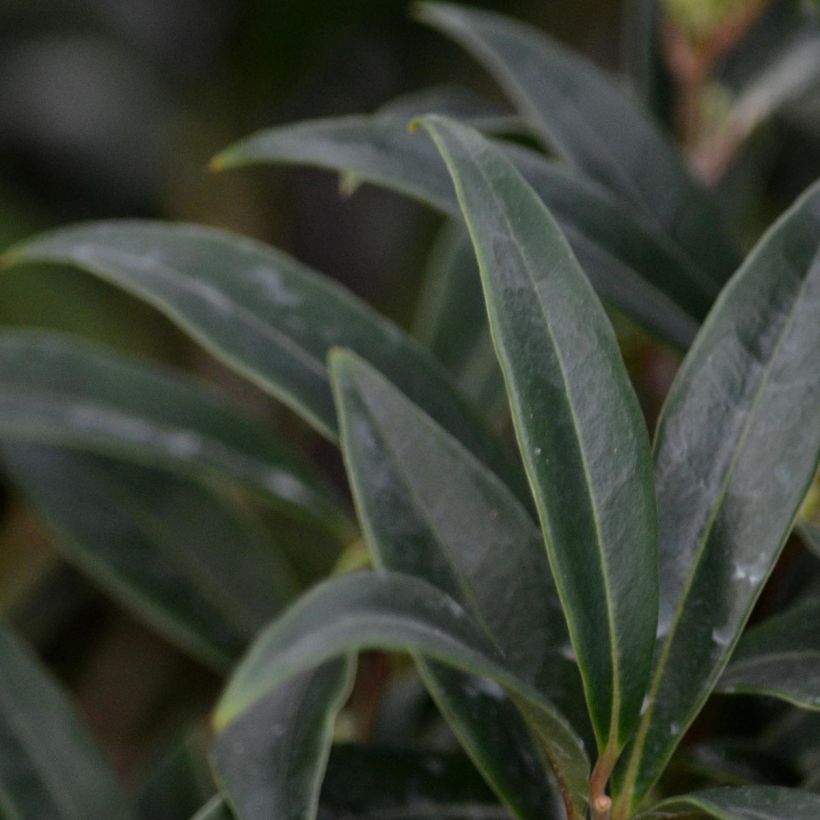

Plant habit
Flowering
Foliage
Botanical data
Sarcococca
hookeriana var. digyna
Buxaceae
Sweet Box, Christmas Box
China
Other Sarcococcas
View all →Planting and care
Plant Sarcococca hookeriana var. digyna in a partially shaded or shady position, in well-prepared soil. It is tolerant: while it prefers slightly acidic soil (rich in humus), this bush also accepts slightly chalky soils. Similarly, it prefers soils that are not too dry, but once well-rooted, it becomes drought-tolerant. In cold areas, mulch it in the first winters or in case of exceptional cold: it is hardy down to -15°C (5°F). As it does not appreciate excessive water, it requires good drainage: a good twenty centimetres of gravel at the bottom of the pit is useful in very clayey and compact soils. Add compost and good quality potting soil to your garden soil, and possibly some sand to lighten it. At the end of winter, after flowering, you can prune it very lightly so that its shape remains compact. At the age of 10, this bush does not exceed one metre in height.
Planting period
Intended location
Care
Planting & care advice
-
, onOrder confirmed
Reply from on Promesse de fleurs
Similar products
Haven't found what you were looking for?
Hardiness is the lowest winter temperature a plant can endure without suffering serious damage or even dying. However, hardiness is affected by location (a sheltered area, such as a patio), protection (winter cover) and soil type (hardiness is improved by well-drained soil).

Photo Sharing Terms & Conditions
In order to encourage gardeners to interact and share their experiences, Promesse de fleurs offers various media enabling content to be uploaded onto its Site - in particular via the ‘Photo sharing’ module.
The User agrees to refrain from:
- Posting any content that is illegal, prejudicial, insulting, racist, inciteful to hatred, revisionist, contrary to public decency, that infringes on privacy or on the privacy rights of third parties, in particular the publicity rights of persons and goods, intellectual property rights, or the right to privacy.
- Submitting content on behalf of a third party;
- Impersonate the identity of a third party and/or publish any personal information about a third party;
In general, the User undertakes to refrain from any unethical behaviour.
All Content (in particular text, comments, files, images, photos, videos, creative works, etc.), which may be subject to property or intellectual property rights, image or other private rights, shall remain the property of the User, subject to the limited rights granted by the terms of the licence granted by Promesse de fleurs as stated below. Users are at liberty to publish or not to publish such Content on the Site, notably via the ‘Photo Sharing’ facility, and accept that this Content shall be made public and freely accessible, notably on the Internet.
Users further acknowledge, undertake to have ,and guarantee that they hold all necessary rights and permissions to publish such material on the Site, in particular with regard to the legislation in force pertaining to any privacy, property, intellectual property, image, or contractual rights, or rights of any other nature. By publishing such Content on the Site, Users acknowledge accepting full liability as publishers of the Content within the meaning of the law, and grant Promesse de fleurs, free of charge, an inclusive, worldwide licence for the said Content for the entire duration of its publication, including all reproduction, representation, up/downloading, displaying, performing, transmission, and storage rights.
Users also grant permission for their name to be linked to the Content and accept that this link may not always be made available.
By engaging in posting material, Users consent to their Content becoming automatically accessible on the Internet, in particular on other sites and/or blogs and/or web pages of the Promesse de fleurs site, including in particular social pages and the Promesse de fleurs catalogue.
Users may secure the removal of entrusted content free of charge by issuing a simple request via our contact form.
The flowering period indicated on our website applies to countries and regions located in USDA zone 8 (France, the United Kingdom, Ireland, the Netherlands, etc.)
It will vary according to where you live:
- In zones 9 to 10 (Italy, Spain, Greece, etc.), flowering will occur about 2 to 4 weeks earlier.
- In zones 6 to 7 (Germany, Poland, Slovenia, and lower mountainous regions), flowering will be delayed by 2 to 3 weeks.
- In zone 5 (Central Europe, Scandinavia), blooming will be delayed by 3 to 5 weeks.
In temperate climates, pruning of spring-flowering shrubs (forsythia, spireas, etc.) should be done just after flowering.
Pruning of summer-flowering shrubs (Indian Lilac, Perovskia, etc.) can be done in winter or spring.
In cold regions as well as with frost-sensitive plants, avoid pruning too early when severe frosts may still occur.
The planting period indicated on our website applies to countries and regions located in USDA zone 8 (France, United Kingdom, Ireland, Netherlands).
It will vary according to where you live:
- In Mediterranean zones (Marseille, Madrid, Milan, etc.), autumn and winter are the best planting periods.
- In continental zones (Strasbourg, Munich, Vienna, etc.), delay planting by 2 to 3 weeks in spring and bring it forward by 2 to 4 weeks in autumn.
- In mountainous regions (the Alps, Pyrenees, Carpathians, etc.), it is best to plant in late spring (May-June) or late summer (August-September).
The harvesting period indicated on our website applies to countries and regions in USDA zone 8 (France, England, Ireland, the Netherlands).
In colder areas (Scandinavia, Poland, Austria...) fruit and vegetable harvests are likely to be delayed by 3-4 weeks.
In warmer areas (Italy, Spain, Greece, etc.), harvesting will probably take place earlier, depending on weather conditions.
The sowing periods indicated on our website apply to countries and regions within USDA Zone 8 (France, UK, Ireland, Netherlands).
In colder areas (Scandinavia, Poland, Austria...), delay any outdoor sowing by 3-4 weeks, or sow under glass.
In warmer climes (Italy, Spain, Greece, etc.), bring outdoor sowing forward by a few weeks.






























